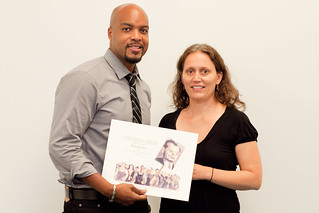Why Do You Think They Call Them Killer Whales?

A Florida judge agreed with OSHA that SeaWorld endangered its trainers by making them swim with whales. The ruling is part of the fallout from a 2010 incident in which a trainer was drowned by an orca as horrifed spectators looked on:
A judge has ruled that SeaWorld is endangering its trainers by allowing them to swim with killer whales after the death of trainer Dawn Brancheau by a killer whale in 2010.
In his order released on Wednesday, Judge Kenneth Welsch sided with OSHA, which believes the best way to keep trainers safe is to keep them out of the water and behind a barrier while working with orcas.
SeaWorld is developing several new ways to keep trainers safe, including a quick-rising pool floor that would lift the trainers and the whales out of the water in an emergency. [WKMG/AP]
In retrospect, it’s amazing that trainers were ever allowed to swim with whales on the job. What part of a 120-pound human getting in a tank with a 22,000-pound creature known as a “killer whale” sounds safe? I might add that performing at SeaWorld is no dream job for the whale, either.
The head of OSHA called the judge’s ruling a victory for the trainers, but OSHA’s victory was only partial. The judge reduced SeaWorld’s fine from $75,000 to $12,000 and downgraded the most serious citation from “willful” to “serious.”
[Photo credit: SeaWorld San Antonio, The Brit_2, Creative Commons.]








